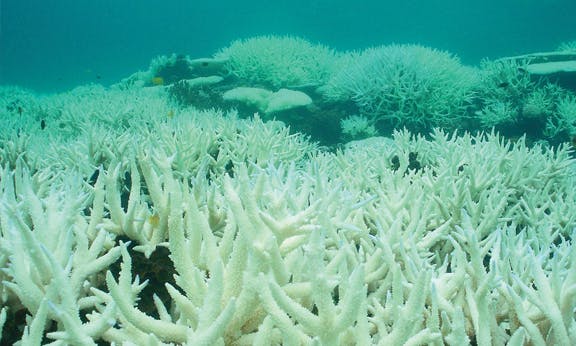Alarm bells ringing on climate change

A slew of new reports and data indicate that global warming is accelerating rapidly, with the first three months of 2016 bringing record temperatures and damaging weather phenomena around the world.
January and February each set new record highs. The global surface temperature in January was 1.15 degrees Celsius above the long-term average for the month (calculated based on the period 1951-1980). In February, it was 1.35 degrees warmer.
Scientists are alarmed. Professor Stefan Rahmstorf from the Potsdam Institute of Climate Impact Research in Germany described it as “really quite stunning” and “completely unprecedented”. Jeff Masters and Bob Henson, writing for the Weather Underground website said, “this result is a true shocker”.
Trends in the northern hemisphere winter have been particularly worrying. In February, average temperatures briefly reached two degrees above the long term average for the first time since records began.
This summer, the Great Barrier Reef suffered the largest coral bleaching event in history.Some areas in the Arctic recorded temperatures 16 degrees above average. At the North Pole, temperatures rose to zero degrees in late December. That might sound cold, but it’s a massive 30 degrees above average for the time of year. Unsurprisingly, the maximum extent of Arctic sea ice coverage hit a new record low.
At the other end of the globe, a new study published in the journal Nature has found that the melting of the West Antarctic ice sheet is likely to proceed much faster than previously thought. Described in the New York Times as “a sword of Damocles hanging over human civilization”, the ice sheet is larger than Mexico and would, if it melted, raise sea levels by more than four metres.
It had been assumed that this wouldn’t occur for hundreds if not thousands of years. Not any more. The new study, titled “Contribution of Antarctica to past and future sea-level rise”, predicts that under a high emissions scenario, the sheet could break up and melt within decades. In this case, sea-level rises could be as high as two metres by the end of the century. If the new forecasts are correct, the result will be devastating.
In Australia, we’re already getting a taste of what the future holds. This summer, the Great Barrier Reef suffered the largest coral bleaching event in history.
Bleaching occurs when warmer ocean temperatures or pollution disrupt the normal process through which the reef receives oxygen and nutrients from algae. The colourful algae, called zooxanthellae, are expelled by the coral – giving it a ghostly “bleached” appearance. Much of the bleached coral will die off completely.
The scale of the damage caused by this year’s bleaching event is horrifying. The head of the Australian Research Council Centre of Excellence for Coral Reef Studies, Terry Hughes, conducted a survey of the reef’s northern section. Out of 520 reefs north of Cairns, 95 percent were found to be “severely” bleached. Only four were healthy.
The severity of the bleaching is partly explained by the prevalence of El Niño conditions, with unusually warm water temperatures in the western Pacific. But this isn’t the whole story.
According to scientists, over the last three decades the reef has already lost more than half of its coral coverage. As the climate continues to warm, the scale and rate of the destruction are only likely to increase.
The alarm bells on climate change are ringing loud and clear. Unfortunately for us, however, the global ruling class and the politicians who serve them show no sign of taking the kind of swift action required to change course.